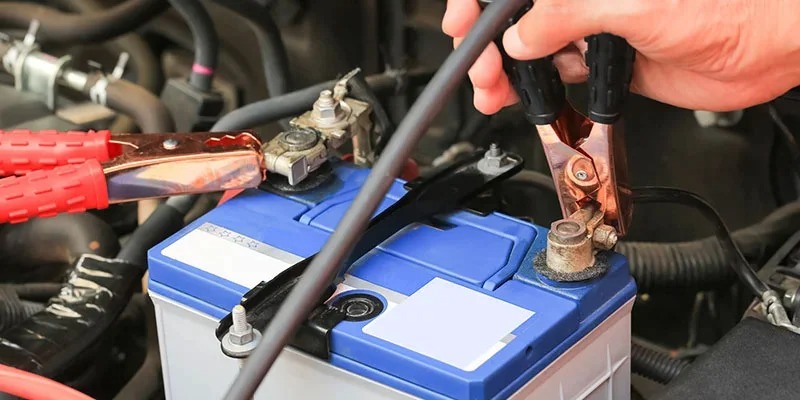In the rapidly evolving energy landscape of 2025, lithium battery companies are playing a pivotal role in shaping the future of energy storage, electric vehicles, and grid resilience. As innovation accelerates and global demand surges, the distinction between ordinary manufacturers and industry leaders becomes ever more apparent. At the center of this transformation are the lithium Battery Companies that have invested heavily in R&D, supply chain optimization, and sustainable practices.
The Rising Demand for Lithium Battery Companies
Global Electrification and Energy Storage Boom
As governments and industries push towards decarbonization, the role of lithium batteries becomes indispensable. From electric mobility to renewable energy integration, the demand for high-performance, long-life batteries continues to skyrocket. This rising demand gives lithium battery companies the opportunity to expand, innovate, and scale their operations globally.
Dominance in EV and Grid Sectors
Electric vehicles (EVs) represent a major market for lithium batteries. Leading lithium battery companies now supply not just automotive giants but also public transportation systems and micro-mobility platforms. Similarly, utility-scale battery storage is gaining ground as nations look to stabilize energy grids amid renewable energy influxes.
Key Attributes That Define Leading Lithium Battery Companies
Technological Innovation
The foremost characteristic of top lithium battery companies in 2025 is their focus on technological advancement. Companies investing in solid-state battery research, silicon anode development, and faster charging capabilities are setting new industry standards.
Vertical Integration and Supply Chain Control
Control over the supply chain has become essential. The most successful lithium battery companies own or partner closely with mining operations, refining facilities, and manufacturing plants. Vertical integration ensures reliability in sourcing critical materials like lithium, cobalt, and nickel.
Sustainability and Environmental Responsibility
ESG (Environmental, Social, and Governance) goals are at the forefront of investor and regulatory scrutiny. Thus, top lithium battery companies lead with low-emission manufacturing processes, battery recycling initiatives, and ethical sourcing practices.
Emerging Trends Among Lithium Battery Companies
AI and Smart Manufacturing
Automation and AI are being employed at every stage of battery production. From quality control to predictive maintenance, smart manufacturing enables lithium battery companies to enhance efficiency and product quality.
Battery-as-a-Service (BaaS)
Forward-thinking lithium battery companies are moving beyond product sales to offer services like leasing, swapping, and real-time performance monitoring. BaaS models are gaining traction among fleet operators and industrial users looking for flexible and cost-effective battery solutions.
Global Expansion into Developing Markets
To meet growing global energy demands, leading lithium battery companies are setting up operations in developing regions. Markets in Southeast Asia, Africa, and South America are particularly attractive due to their untapped potential and rising energy needs.
Regional Leaders and Powerhouses
Asia-Pacific: The Epicenter of Battery Production
China, South Korea, and Japan remain strongholds for lithium battery companies due to their established infrastructure, technological expertise, and access to raw materials. Chinese firms, in particular, dominate global battery exports and continue to increase their global market share.
North America: Innovation and Policy-Driven Growth
With the U.S. government supporting domestic manufacturing through incentives like the Inflation Reduction Act, lithium battery companies in North America are poised for exponential growth. Collaborations between battery firms and automakers are also enhancing production capabilities.
Europe: Sustainability-First Strategy
European lithium battery companies emphasize low-carbon footprints, local sourcing, and circular economies. The European Battery Alliance is playing a major role in supporting homegrown initiatives and ensuring strategic autonomy.
Challenges Facing Lithium Battery Companies
Raw Material Scarcity
While demand surges, the availability of key materials such as lithium and cobalt remains a concern. Lithium battery companies must navigate geopolitical tensions, environmental regulations, and fluctuating mining yields to maintain supply stability.
Recycling and Lifecycle Management
Battery disposal and recycling are critical issues. Top lithium battery companies are investing in closed-loop systems to recover valuable materials and reduce environmental impact.
Regulatory Compliance and Trade Barriers
With varying standards across regions, lithium battery companies need to adapt to different regulatory environments. Trade tariffs, safety certifications, and transportation restrictions require flexible and compliant business strategies.
Competitive Edge: What Truly Sets Them Apart
Customization and Application-Specific Designs
From drones to electric trucks, customers demand application-specific battery designs. Leading lithium battery companies offer tailored solutions with varying voltage, cycle life, and thermal management systems.
Reliability and Safety Standards
Battery safety is non-negotiable. Advanced battery management systems (BMS), thermal runaway prevention technologies, and stringent quality assurance give the best lithium battery companies a reputation for reliability.
Speed to Market
Innovation cycles are shortening. Top lithium battery companies combine rapid prototyping with agile production methodologies to respond to customer needs swiftly.
Role of R&D in Differentiating Lithium Battery Companies
Solid-State Batteries and the Next Frontier
Research into solid-state batteries is intensifying. These batteries promise higher energy density, faster charging, and improved safety. Lithium battery companies leading this research are likely to disrupt the industry in the coming years.
High-Performance Electrolytes and Anodes
Innovations in electrolyte composition and anode design (such as lithium-silicon blends) are enabling longer battery life and better thermal stability. These improvements are essential for high-performance applications in aerospace and defense.
The Future Outlook for Lithium Battery Companies
Consolidation and Strategic Partnerships
As the market matures, mergers and acquisitions are expected. Strategic partnerships between lithium battery companies, automakers, tech firms, and energy providers will drive future innovation and expansion.
Digital Twins and Predictive Analytics
The integration of digital twin technology is transforming battery monitoring. Lithium battery companies use real-time data and simulations to predict battery health, optimize usage, and extend lifespan.
Circular Economy Integration
Recycling is no longer an afterthought. Companies are embedding recyclability into the design phase, allowing lithium battery companies to close the loop and achieve net-zero objectives.
Conclusion
In 2025, the landscape of lithium battery companies is defined by more than just capacity or market share. It’s shaped by innovation, sustainability, agility, and strategic foresight. The companies that thrive will be those who can not only produce high-quality batteries but also adapt to global shifts, lead with responsibility, and continue pushing technological boundaries. As the world transitions to a cleaner and more electrified future, lithium battery companies remain at the heart of this powerful movement—driving change one cell at a time.











Leave a Reply